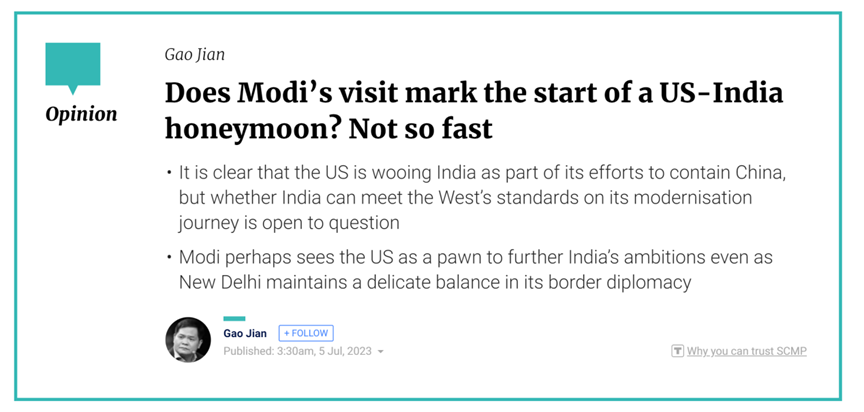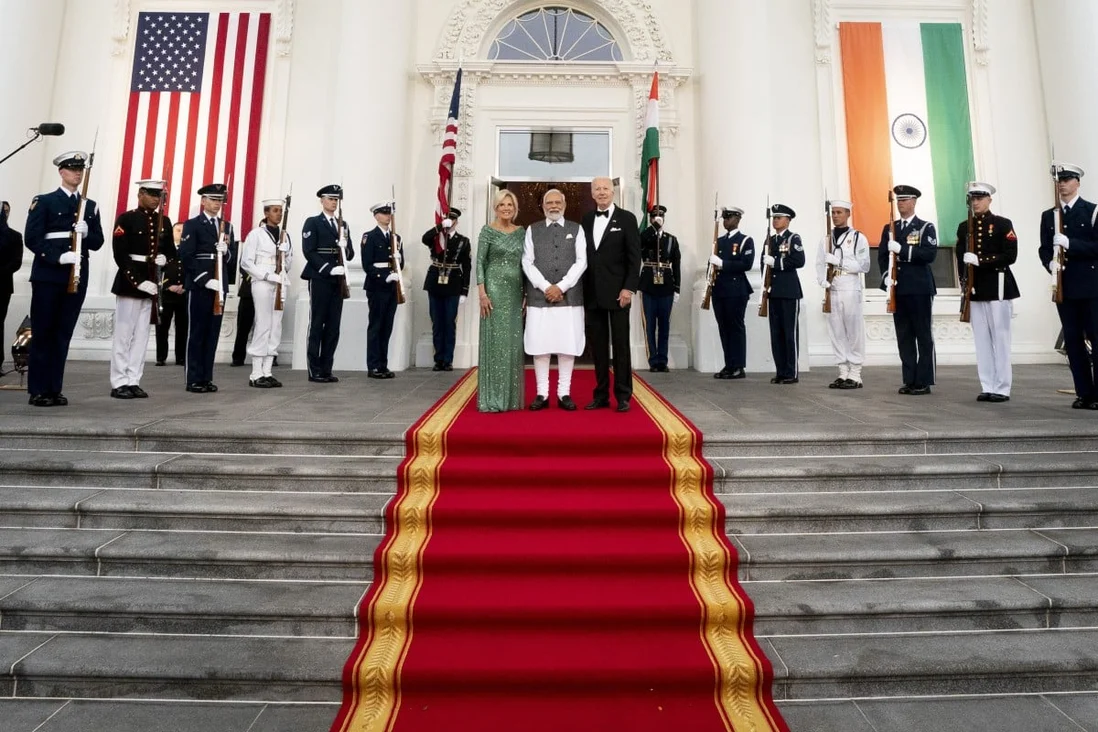Gao Jian is a scholar at the Shanghai International Studies University and a China Forum expert
Indian Prime Minister Narendra Modi received an exceptionally warm welcome during his recent visit to the United States. The US Congress spared little effort in showing favour to Modi, despite concerns about human rights in India.

It seems the democratic principle of defending human rights can be traded in the pursuit of diplomatic interests. But how certain is the conclusion that Modi’s visit is the prelude to a honeymoon in US-India relations?
When he met the media at the White House, Modi was pressed on human rights. There has been growing pressure in the US for the Biden administration to openly criticise the Modi government’s human rights record. So it was surprising that Biden responded to a question about this by saying both countries have “an overwhelming respect for each other because we’re both democracies”.
Yet this seemingly positive response exposes the fundamental prerequisite for India’s entry into the Western club: only when India becomes a Western-style “democracy” can it be fully accepted and respected.
Superficially, India has adopted the Western political system. But as an Eastern country with its own cultural characteristics, India also has its own ideas about modernisation. The Biden administration’s efforts to weaponise the ideology of democracy will only end up eroding the West’s credibility.
Anyone with some sense of international politics can guess why the US would wish to ingratiate itself with India, a country with the potential to mature into an important power. On the American chessboard, there is no better choice than India to contain China in the Asia-Pacific.
A master of propaganda, Modi sketched out his vision of India’s future as the world’s third-largest economy in his speech to the US Congress. Theoretically, India could replicate China’s four miraculous decades of economic growth, given India’s substantial workforce, large market and aspiration of becoming a superpower.
But there are stark differences between China and India, in cultural ideology, national character, political system, social governance, labour force participation and infrastructure. India must find a way to modernise that is in line with its social conditions and national characteristics. Would this be politically, or even culturally, acceptable in the eyes of Western powers?

History suggests there is no free lunch when it comes to the West, as the Plaza Accord that punctured Japan’s economic rise and, more recently, the containment of China show. Yet if India is to be nothing more than a puppet of US interests in the Asia-Pacific, what can be expected from such an unequal bilateral relationship?
There are also structural contradictions in US-India relations that are difficult to overcome. It is hard to see New Delhi as a high-end partner in the US’ Indo-Pacific Economic Framework for Prosperity (IPEF), given India’s current economic model and level of modernisation. For India to develop economically, it not only needs massive foreign investment but also an enormous overseas market – but the IPEF does not provide greater access to the US market.
The core interest of the US government is the repatriation of its capital and the restoration of its industry. Defending the interests of American companies and ensuring the return of jobs are the top priorities of the Democratic Party. Opening up the US market further, whether to India or the rest of the Asia-Pacific, appears to be next to impossible.
Another area that will prove challenging for the US and India to resolve is environmental protection and global climate governance. The IPEF essentially seeks to impose the standards of developed countries in several areas – including carbon emissions – on developing Asian countries. To what extent can a US focused on “America- first” interests accommodate the climate and energy concerns of an ambitious India?
India has never let go of its history as a great power, and independence remains the undertone of modern India’s diplomacy. It may be that in Modi’s diplomatic chess game, he sees the US as a pawn which can further India’s ambitions while Delhi maintains a delicate balance in its border diplomacy, important in guaranteeing the coutnry’s fundamental interests.
By allowing itself to be drawn into the US ambit, India has secured a favourable position in any economic integration in the Indo-Pacific, a region widely acknowledged as the powerhouse of the world’s economic future. At the same time, it has been allowed to take a stance different from the US on the Russia-Ukraine crisis.
Perhaps, in the evolving relationship between the US and India, the wisdom of a much more ancient civilisation will yet reveal itself.
(This article was first published on South China Morning Post on July 5, 2023.)
